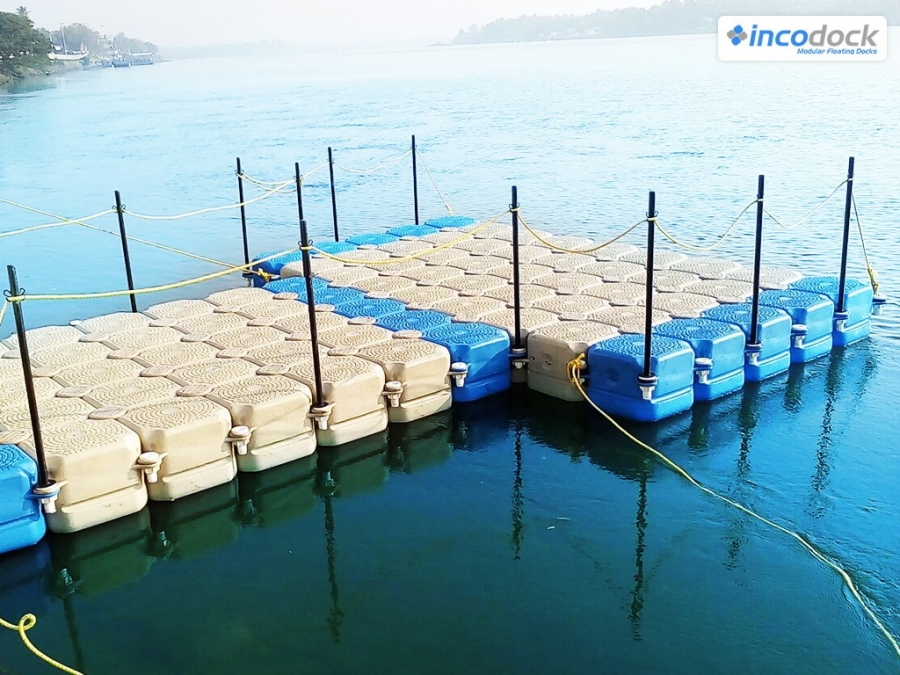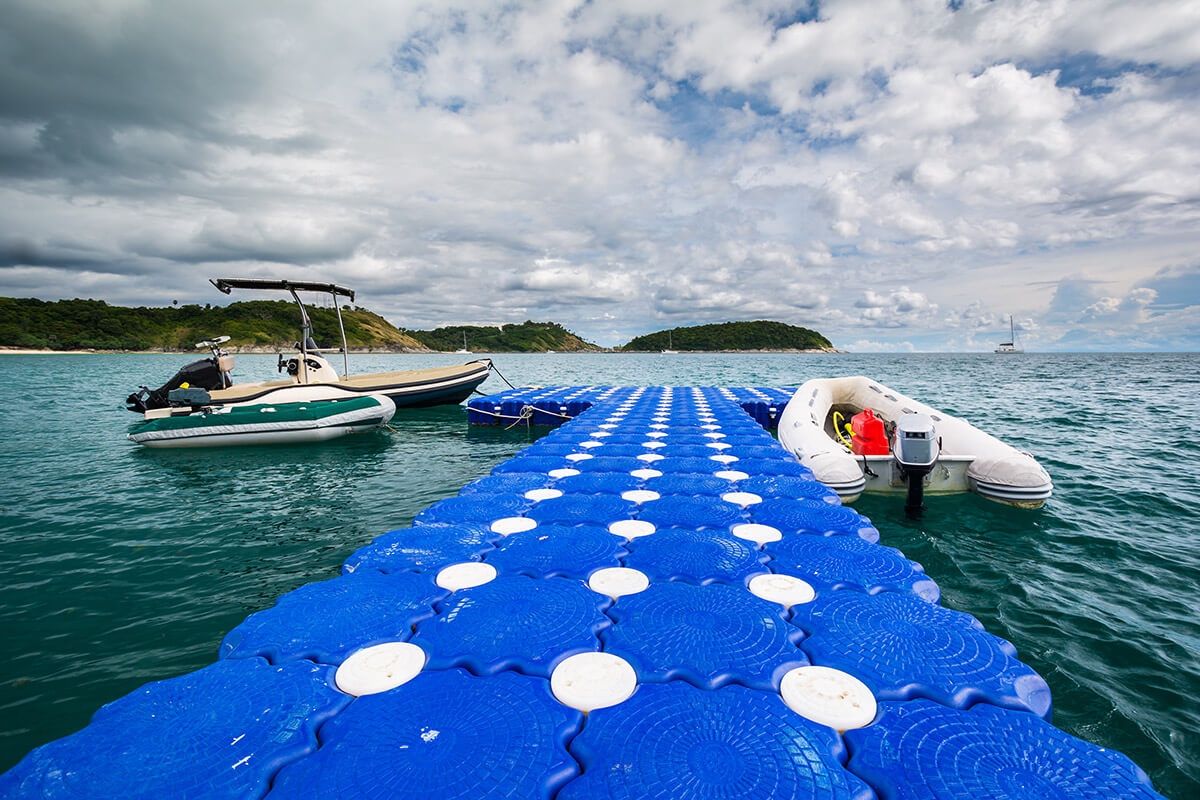Discover the Range of Floating Dock Providers Designed to Suit Every Boater's Requirements
Discover the Range of Floating Dock Providers Designed to Suit Every Boater's Requirements
Blog Article
Develop the Perfect Docking Service With Floating Docks
Floating docks existing a flexible service for a selection of maritime needs, adjusting effortlessly to varying water levels and diverse vessel kinds. Their modular nature enables quick installment and moving, yet the choice of ideal products and design features is essential for ensuring both performance and visual appeal. As we check out the important aspects that add to the effectiveness of floating docks, numerous crucial variables concerning stability and maintenance will certainly arise, increasing concerns concerning how to enhance your docking experience. The subsequent discussion will brighten these crucial factors to consider.

Advantages of Floating Docks
Floating docks offer numerous benefits that make them an optimal selection for numerous maritime applications. One of the main benefits is their adaptability to altering water levels. Unlike fixed docks, floating docks increase and autumn with the tide, guaranteeing constant availability for vessels. This attribute is especially important in areas susceptible to substantial tidal changes or seasonal water degree adjustments.
In addition, floating docks are commonly simpler and quicker to set up contrasted to conventional fixed structures. Their modular style enables straightforward setting up and disassembly, promoting maintenance and moving when necessary. This versatility is particularly helpful for momentary applications or in environments where conditions may alter.
Floating docks also have a tendency to be a lot more eco-friendly, as they lessen disruption to the seabed and surrounding aquatic ecosystems. Their buoyant nature minimizes the threat of damage to aquatic life, promoting a much healthier setting. Furthermore, these docks can be personalized to fit numerous vessel sizes, ensuring that they satisfy details operational needs - floating dock company.
Inevitably, the mix of flexibility, simplicity of setup, and environmental factors to consider makes floating docks a highly efficient option for a large range of maritime needs.
Selecting the Right Materials
Picking the appropriate products for floating docks is vital to ensure longevity, long life, and security. The option of products directly influences the dock's efficiency in different ecological problems, consisting of exposure to water, sunlight, and possible wear from marine web traffic.
Usual materials used for floating docks consist of aluminum, timber, and high-density polyethylene (HDPE) Light weight aluminum is lightweight, corrosion-resistant, and requires minimal maintenance, making it an exceptional option for durability. Its first price can be higher contrasted to various other materials.
Timber, while cosmetically enticing and providing a standard look, can be at risk to rot and insect damage otherwise properly dealt with. Therefore, making use of pressure-treated wood or normally durable types like cedar or redwood can mitigate these problems.
HDPE is a popular choice because of its resistance to UV rays and chemicals, together with being eco-friendly. floating docks. It is light-weight and available in numerous shades, permitting modification
Eventually, the best material option will certainly depend on particular needs, consisting of spending plan, desired aesthetic appeals, and ecological factors to consider. Cautious assessment of these factors will cause a successful and resilient floating dock option.
Style Factors To Consider for Stability
When developing floating docks, making sure security is an essential element that can substantially influence their functionality and security. Source Stability in floating dock style is influenced by numerous elements, including buoyancy, weight circulation, and the arrangement of elements. An ideal buoyancy system ought to make use of materials that give sufficient lift while lessening weight. This equilibrium guarantees that the dock remains above water, even under differing loads.
Weight circulation is critical; uniformly dispersing lots across the dock protects against tilting and improves security. This can be attained with critical placement of docking tools, such as fenders and cleats, as well as appropriate spacing of drifts. Additionally, the measurements of the dock need to be thoughtfully intended. Bigger layouts can provide raised security, specifically in harsh water conditions, while longer docks may require extra supports to avoid drooping.
An additional crucial consideration is the environmental impact, including wave activity and wind. Integrating attributes such as sidewalls or skirting can assist reduce the effects of environmental forces, keeping stability in adverse conditions. Inevitably, a mix of thoughtful design, material selection, and understanding of ecological factors will yield a drifting dock that meets both security and safety and security requirements.
Installment Tips and Techniques

Next, safeguard the required licenses and stick to regional policies, which might determine installment approaches and environmental factors to consider. If needed, engage a qualified specialist experienced in floating dock setups. Usage top notch materials developed for marine environments to boost longevity and durability.
When positioning the dock, straighten it parallel to the coastline to help with easy accessibility. Make certain that the anchoring system is robust, using concrete blocks or helical supports to maintain the dock against wind and wave action. It's essential to make up seasonal water level fluctuations, including possible ice movement in colder climates.
Throughout the installation, confirm the dock's floatation and stability before wrapping up the anchoring. Routinely evaluate the setup for any kind of indicators of wear or damage. By adhering to these techniques and suggestions, you can attain a safe and secure, useful, and visually pleasing floating dock installment that satisfies your demands.
Upkeep and Care Guidelines
Keeping and caring for floating docks is essential to prolonging their lifespan and making sure secure use. Regular assessments ought to be conducted to recognize any indications of wear, damages, or aquatic growth. Search for fractures, loose fittings, or blemished areas on the dock's surface, as these problems can jeopardize structural honesty.
Cleaning is important. Make use of a stress washing machine to remove algae, barnacles, and debris, which can accumulate in time. For persistent growth, consider environmentally friendly cleaner that will not damage water life.
Additionally, check the mooring lines and anchors frequently to ensure they are totally free and safe from his explanation corrosion. Replace any type of torn check this site out or damaged lines quickly to keep stability.
During severe weather condition, such as storms or freezing problems, take preventive procedures. Secure the dock with additional mooring lines and, if practical, remove any detachable components to stop damage.
Verdict
In verdict, the application of floating docks provides a efficient and functional docking solution ideal for various maritime applications. With proper installment and regular upkeep, floating docks can offer dependable and efficient docking experiences for a broad array of vessels.
As we check out the essential aspects that add to the effectiveness of floating docks, several crucial factors regarding security and maintenance will arise, elevating inquiries concerning just how to optimize your docking experience. Unlike fixed docks, floating docks surge and fall with the trend, guaranteeing regular ease of access for vessels.When creating floating docks, making certain stability is a fundamental facet that can considerably influence their performance and security. Stability in floating dock layout is affected by various elements, including buoyancy, weight distribution, and the arrangement of components. Eventually, a combination of thoughtful style, product choice, and understanding of ecological aspects will yield a drifting dock that meets both security and safety and security requirements.
Report this page